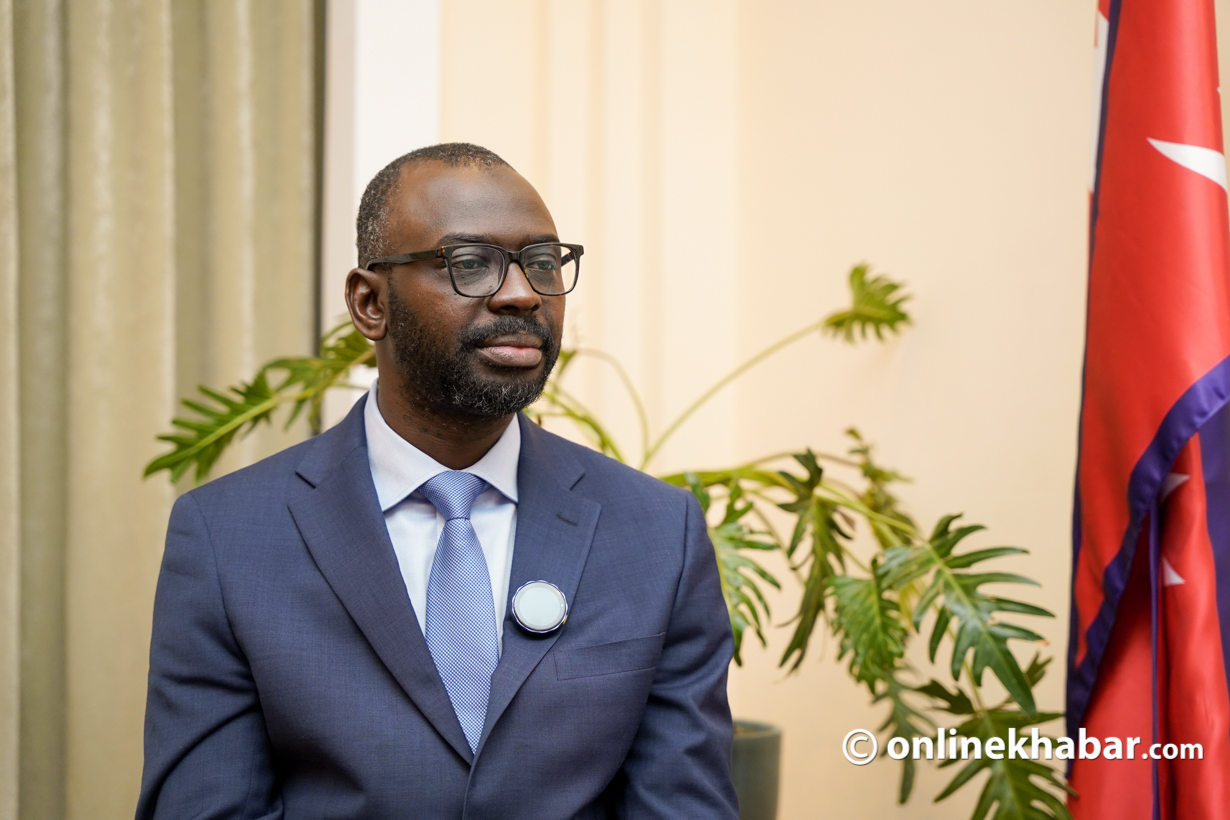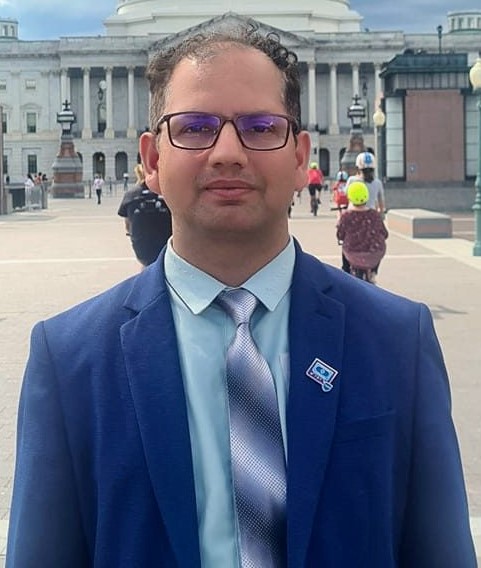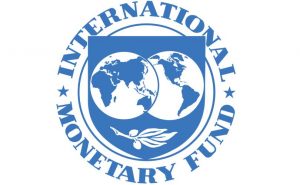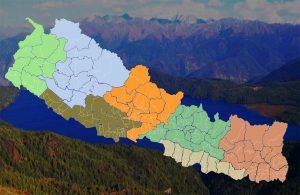
Dr Tidiane Kinda is a Deputy Division Chief and Mission Chief to Nepal at the International Monetary Fund (IMF). Previously Assistant to the Director, he is an economist with extensive country experience in surveillance, IMF-supported programs, and technical assistance.
An IMF staff team, led by Dr Kinda, conducted a staff visit to Kathmandu from February 5 to 12, to discuss recent macroeconomic developments and the implementation of the Fund-supported program.
In an interview with Janardan Baral of Onlinekhabar, he shared his views on the current economic situation of Nepal, the IMF-supported reform programme, and clarified misunderstandings and misrepresentations about the idea that the IMF interferes in Nepal’s domestic economic policies.
Excerpts:
Nepal has been undergoing a period of sluggish economic growth for the past few years, and the medium-term projections from the IMF are not encouraging either. How would you analyse the current economic situation in Nepal?
This is a very important question for us, one that we paid attention to during our recent visit to Nepal because of the current relatively slow growth. The IMF’s growth estimation was around one per cent for the last fiscal year. However, this year, we expect to see some recovery. IMF’s projection for this fiscal year is that growth will be around 3.1 per cent.
The IMF’s projection is predicated on stronger execution of capital expenditure this year. We hope to see that materializing in the second half of the fiscal year. We also anticipate an improvement in credit growth, which has been quite subdued in the first half of the year. In terms of the medium-term, even though we expect a recovery from 1 per cent to just 3 per cent this year, our medium-term prospect is positive, aiming to return to about potential growth rate of 5 per cent. This will be the reflection of strategic investment coming into the stream, particularly in the energy sector, helping to boost growth back to around 5 per cent in the coming years.
Nepal is currently grappling with significant economic challenges. Domestic demand is remarkably low, government revenue collection is not as robust as hoped, and expenditures remain below average due to funding shortages. The country appears to be slipping into a cycle of low revenue, low expenditure, and low demand, potentially leading to an economic recession. What are your thoughts on this situation?
This is clearly a quite challenging situation, especially regarding the weak performance of revenue collection. However, when we look at the execution of the budget in the first half of this fiscal year, we observe some increase in revenue collection, but not as much as we expected. Nevertheless, there is hope because revenue is starting to grow back. We acknowledge that spending execution is below what we expected, particularly in capital spending, which is crucial for boosting growth. Weak revenue performance could be one of the factors behind slow capital expenditure. However, Nepal has a way to boost capital spending while addressing the low revenue collection. In this situation, Nepal should rely more on donor financing, which is concessional and can help provide financing for capital spending.
So, even though the current situation is challenging, Nepal could be able to experience both higher capital spending and higher revenue soon. This is why we are working with the government to devise and implement a domestic revenue mobilization strategy that will help boost revenue. Additionally, we are working on a public investment management action plan, which will include concrete actions to address sluggishness in the execution of capital spending. Expectations are that results could start to become visible in these two aspects soon.

What recommendations would you propose for the economic recovery, particularly in stimulating aggregate domestic demand?
We’ve been advising the government that one area that quickly boosts domestic demand is accelerating the execution of capital spending. But, at the same time, we don’t want spending to go to waste. So, it is important to proceed gradually and wisely, targeting the most efficient projects.
We have been discussing this matter extensively with the government. We believe that going forward, capital spending will increase and that will help to boost domestic demand.
Nepal’s banks and financial institutions are grappling with the challenge of low capital adequacy ratios, hindering their capacity for additional lending. Moreover, starting this year, banks are obligated to uphold an additional 0.5 per cent of core capital as a counter-cyclical buffer. What potential solutions do you propose for addressing this issue?
What we observe is that system-wide, Nepal’s banking sector is sound. A few banks seem to have a capital adequacy ratio on the lower side and need recapitalization. The solution to boost growth is not to relax regulations but to focus on why credit is not growing. When we look at the system as a whole, liquidity is ample. So, credit is low not because of a lack of liquidity but because of a demand issue. We believe that boosting demand, in particular investment either domestic or FDI, will genuinely help increase credit growth further. ’It is essential to note that having high credit growth is not necessarily a good situation. The best scenario is to have healthy credit growth, aimed at financing good investment projects, and contribute to economic growth and job creation.
If we look at the past in Nepal, large increases in credit have not translated into economic growth and job creation. What is important now is to have credit growth that is sustainable and translates into investment and stronger economic growth. We believe that implementing the financial sector reforms envisaged under the IMF Extended Credit Facility, such as working capital loan guidelines and amended asset classification regulations, will help Nepal achieve healthier and more sustainable credit growth, thereby improving economic activity.
As you mentioned, Nepal Rastra Bank issued working capital loan guidelines last year as part of its commitment under the Extended Credit Facility (ECF) of the International Monetary Fund. However, the private sector expressed dissatisfaction with the guidelines and exerted pressure on the central bank to make amendments. In response to their demands, NRB has revised the guidelines multiple times. How do you analyse these developments in Nepal?
We’ve been supporting Nepal Rastra Bank (NRB) in terms of implementing these amended asset classification regulations and working capital loan guidelines, which we see as very important. We believe that the continuous implementation of these regulations is crucial to address underlying vulnerabilities and help unleash Nepal’s growth potential. The fact that NRB has had to amend them a couple of times does not mean that the regulations are not effective. Sometimes, there is a need to implement regulations smoothly and gradually to allow the private sector to adjust to the new situation.
What we observe is that the amended asset classification regulations are already bearing fruit. If you look at the composition of credit, you can see that term loans, which are more appropriate funding for investment projects, are increasing, while working capital loans, which aim at smoothing companies’ turnover and are therefore less appropriate to finance investment, are decreasing. This is a healthy transition that we see and want to encourage. Going forward, the NRB needs to keep implementing these regulations, enhancing them, and tightening them as the situation improves.
Some individuals in Nepal, particularly in the private sector, perceive that the IMF is intervening in the country’s domestic economic policies, particularly in the monetary policy. Could you please clarify how the IMF recommends policy reforms to member countries? Has it genuinely interfered with Nepal’s domestic policy? Kindly elaborate, considering Nepal’s major commitments under the Extended Credit Facility (ECF).
IMF programs are designed to support governments’ economic programs. The government has its own economic reform programs. For instance, in the context of the upcoming investment summit in Nepal, the government is planning to implement several of these reforms before the summit. Many of these reforms are in the same spirit as some of the reforms envisaged under the IMF’s ECF.
When designing IMF-supported programs, as a first step, we listen to governments. Governments share with the IMF what are their priorities to improve the economy. With that information, the IMF advise on the way to achieving these priorities, by bringing in the best recommendations based on the IMF experience in other countries. The objective is to set a number of reforms that both sides, IMF and governments, believe are important. The IMF just supports the government in implementing those reforms and policies, through policy advice and technical assistance.
This means that the ECF is not “the program of the IMF”; it belongs to the Nepali authorities, with the IMF playing an advisory role. But of course, as you know, implementing reforms is very difficult. This happens also in many other countries, not only in Nepal. This is why we always support the government. We provide technical assistance to help implement the program. But the program provides, in a way, a commitment device; it helps bring all parties together, and it helps bring a macro situation together. It helps to show why implementing certain reforms is important and how it can hold together. It helps the country be better off tomorrow.
So, you do not interfere with government policies?
We help the government in implementing its economic policies, but we do not impose anything on the government. We work together with the government. We listen to the government but do not interfere in domestic policies.
What we do is bring in expertise and cross-country experiences, because we have experts going to all countries in the world helping governments to implement their policies and reforms. However, we also take into account that each country is unique. We look at the uniqueness of Nepal and then work together with the government to devise policies and reforms that are appropriate for Nepal.

Nepal’s commitments under the Extended Credit Facility (ECF), such as amending laws to grant autonomy to Nepal Rastra Bank, conducting external audits of the ten major commercial banks, reviewing asset quality, and ensuring transparency by making government-granted tax exemptions accessible to the public, remain unfulfilled. How do you analyze Nepal’s progress in economic reform?
Actually, I would not say that these commitments are unfulfilled; they are in progress.
For instance, let’s take the example of the amendment of the NRB Act. This is a long process; it requires discussions with authorities. We can bring in what other countries are doing. However, it is very, very important for us to listen to authorities, and listen to what they are thinking. Some aspects of the amendments to the act proposed by our experts may be complicated for Nepal to implement given its domestic legal framework. Therefore, we discuss the proposed amendments and then reach an agreement based on both our experience and the government’s views.
In that context for the NRB Act, we agreed jointly to allow more time for discussion to agree on the final set of amendments. Regarding the loan portfolio review, this has not been launched yet. It is in preparation. The launch of the program will take place in a few months from now. In a nutshell, we do see some progress in the reform areas that we agreed on with the government.
So, don’t you think that it could have been expedited quickly?
Of course, at times the faster reforms are implemented the better. But what is important is ownership. So, we also want the government to explain to the Nepali people, why the reforms are important and what the goals are. Sometimes people, or even the business community, don’t fully understand the importance of the reforms. So, the government should take the time to explain it to all stakeholders.
We believe that if reform is owned by the people if a government believes in it and owns it and just sees the IMF’s role as supportive, this is the ideal situation to make that reform successful and longer-lasting. The effectiveness of the reform will transcend the duration of the IMF programme. The idea is not to support and implement reforms just because there is an IMF programme while forgetting about them once the program is over. We work really hand in hand with the government, and we believe that’s the way to go.
Nepal currently possesses a strong foreign exchange reserve, adequate to sustain imports of goods and services for over a year. Generally, there is a consensus that countries should maintain reserves equivalent to 100 per cent of short-term debt or approximately 3 to 4 months’ worth of imports. Is such a substantial reserve necessary for Nepal?
This is a very important question. In the context of Nepal, it has a fixed exchange rate. So it’s crucial to keep ample reserves. What is also important to remember is that about two years ago, the situation was not the same, which means the situation can sometimes change very quickly. Having a high level of reserves, as you mentioned, is an indicator that Nepal has a very strong economy. It shows that Nepal also has good fundamentals.
Not only does Nepal have a high level of reserves, but it also has a relatively low level of debt. From a fiscal and external perspective, it really shows that Nepal has good economic fundamentals. It also indicates that if a foreign investor comes to invest in Nepal, there is low risk because there is an exchange rate adjustment when investing.
So, it is very important to protect these reserves and use them only when necessary.
One last point is that, of course, reserves are growing because of strong remittances, and strong tourism, but also let’s not forget because of subdued import growth. So, when imports recover, that will mean that reserve accumulation will be less, or even reserves will decline. But that will not be a problem because the starting level is very high. So it’s crucial to keep in mind that having high reserves is very, very important to face future shocks.
How can these reserves be optimally utilised within the country?
The reserves are supposed to be buffers. The way to use the buffers is you keep them in a very safe until the situation emerges that necessitates their use.
Let me give you an example. In terms of consistency of policies that we are advising. Clearly, aggregate demand is low, we all agree on that. Second, we agree that accelerating capital spending is important to boost aggregate demand and growth. We also agree that this is an area where the government in particular the Ministry of Finance is making an effort to accelerate capital spending and what we hope is that these efforts will start bearing fruit. We expect to see some increase in capital spending in the second half of the year.
When we see capital spending increasing, there will be higher imports even this year and this will need to be financed by using the reserves. I believe that’s one optimal way of using it.

The IMF has indicated that the transmission of monetary policy in Nepal is weak, especially in the context of balance sheet repair and inflation control. I believe that controlling inflation through monetary policy is challenging for Nepal, given the pegging of the Nepali Rupee (NPR) with the Indian Rupee (INR). What recommendations would you propose to enhance the effectiveness of Nepal’s monetary policy?
This is not the case only in Nepal. Usually, monetary policy transmission in all developing and low-income countries is weak, and there is always room to improve its effectiveness.
Now, a key question that we have been asking ourselves is the transmission of monetary policy to credit growth. Credit growth has been quite subdued, and we understand the frustration that could arise from that. But one thing I would like to emphasise is that liquidity, for instance, in this system, is quite ample and has already started to help in revitalizing credit growth.
The second aspect is that the monetary policy has been loosened in the last few months. However, it takes time for the transmission to impact deposit rates, but you can see that it has already started to have an impact. Of course, the transmission takes time, and it will be accelerated over time. However, that transmission should lead to less incentive to save and more incentive to invest.
Not only that, if deposit rates also decline, it will lead to lower lending rates, and again that could lead to more incentive to borrow. It is a relatively long process, but we believe that the actions that the NRB is taking will lead to a slow but steady improvement in monetary policy transmission.
The fiscal deficit of the country is excessively high compared to capital expenditure over the last decade. This implies that the government is utilising borrowed funds for recurrent expenditures, including public servants’ salaries, or for debt repayment. How do you analyse the allocative efficiency of the government? Do you believe this practice is sustainable?
Based on our overall assessment, Nepal’s public debt is considered sustainable. We categorise it as having a ‘low risk of debt distress,’ indicating that we do not foresee any issues regarding the sustainability of public debt in Nepal. If we have to summarise the two strengths of Nepal, one would be a robust external sector with a high level of reserves. The second one would be fiscal sustainability, signifying a low level of debt. However, even though the level of debt is low, it has increased recently, calling for prudence.
The current level of debt in Nepal is acceptable, but to prevent further increases, the government should focus on two things. First, how to increase revenue and reduce volatility to avoid the sharp shortfall that we have witnessed in the last couple of years. Therefore, strengthening domestic revenue mobilisation is crucial. In our discussions with the government, we are addressing this issue, and the Finance Ministry has also formed a high-level commission to study it.
Second, in terms of spending, we must be a bit careful. Even in the execution of the budget this year, we observe low spending. While low spending can be good as it means less debt, it is not necessarily positive, especially if it hampers capital formation. It is important to raise revenue and increase capital spending, leading to growth and even higher revenue.
What would you say about utilising the borrowed money in recurrent expenditure or repayment of the debt?
Many countries in the world rely on domestically borrowed funds as well as external financing to meet their expenditure needs. In the case of Nepal, it has access to quite a large concessional financing, which could be a good way to finance development spending, particularly in infrastructure projects.
When it comes to using debt to finance recurrent spending, some countries try to avoid that and use debt only for capital spending. If a country’s debt level is high and it is in a weak fiscal position, it is advisable to avoid using debt for recurrent spending, unless that recurrent spending is aimed at addressing severe social problems. However, in the case of Nepal, the overall debt level is not excessively high; and importantly, about half of it is highly concessional. But ensuring that more spending goes towards capital formation and building an effective social protection framework is important. If that happens, it will result in higher growth and higher revenue, leading to a higher chance of growing while maintaining the level of debt under control.
However, if countries spend more on recurrent spending than on investment and well-targeted social protection, it could lead to lower growth and the need to keep borrowing more and more debt, implying a higher level of debt, which is problematic. In a nutshell, where the money goes is very important. The government is trying to rationalize spending duplication between the central and local governments, which is welcome. It is good to pay particular attention to that because decentralization is an important process, but it is equally important to ensure that it doesn’t lead to duplication in spending.
Do you have any messages for the Nepalis?
We are truly here to assist the government and Nepali authorities. Our main objective is simple: the betterment of Nepal’s economy for the Nepali people. We listen to the government and stakeholders, provide advice, and do our best to genuinely help the people. We are always delighted to see the success of Nepal. Undoubtedly, Nepal is a country with great potential. However, it is important to accelerate the pace of reforms to fully benefit from the potential that Nepal possesses. We see the upcoming investment summit as a great opportunity to showcase to the world the potential of Nepal and the reforms it needs.

























